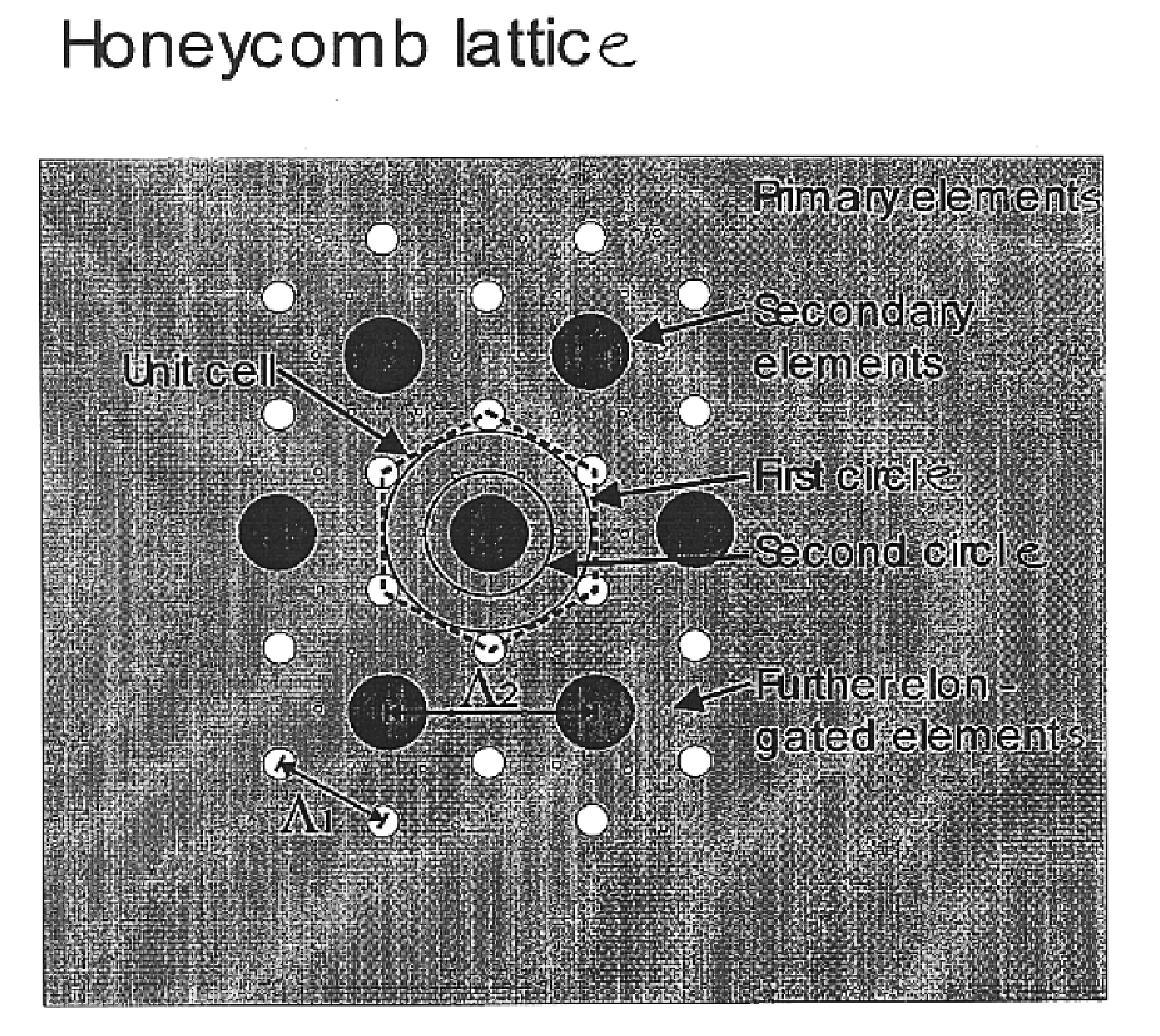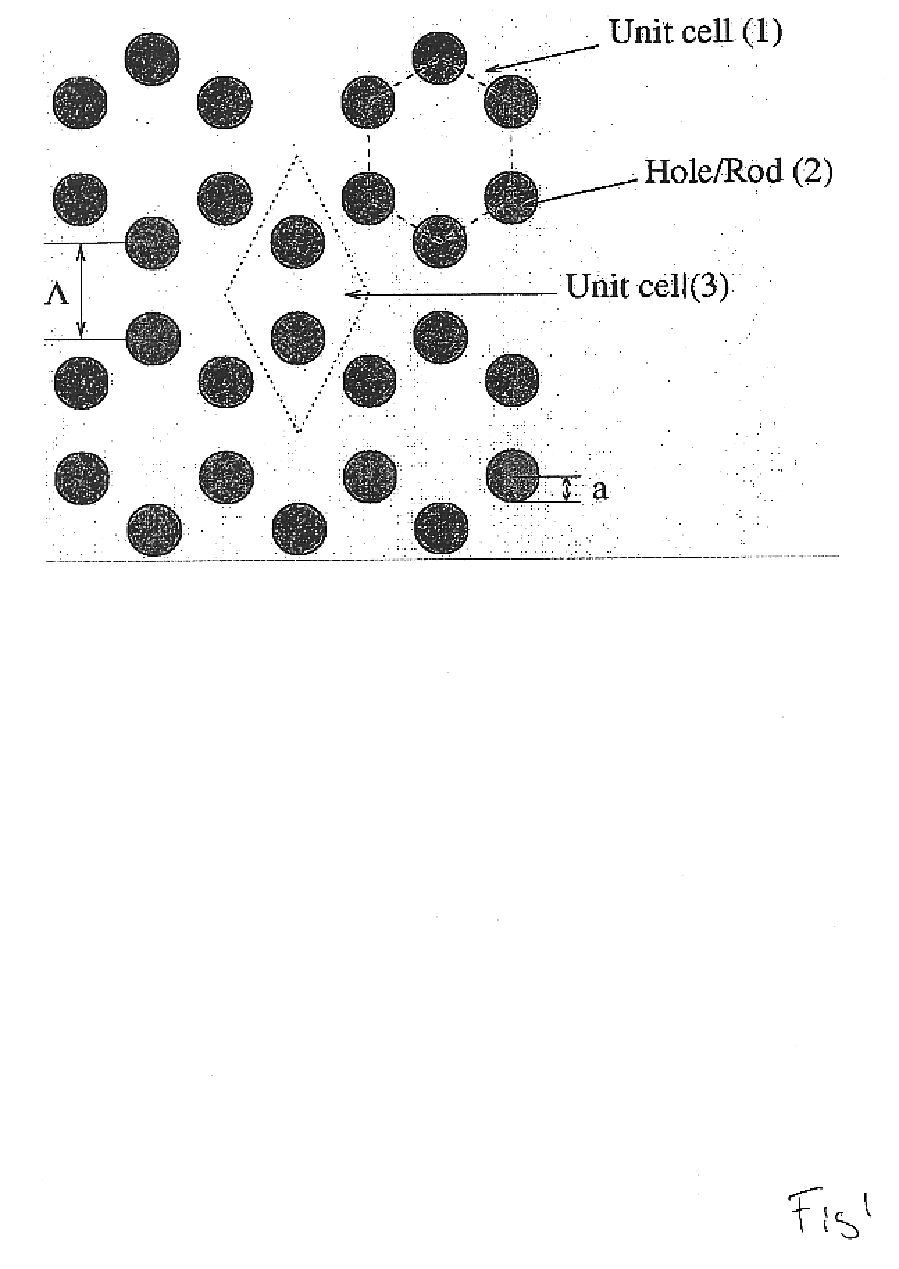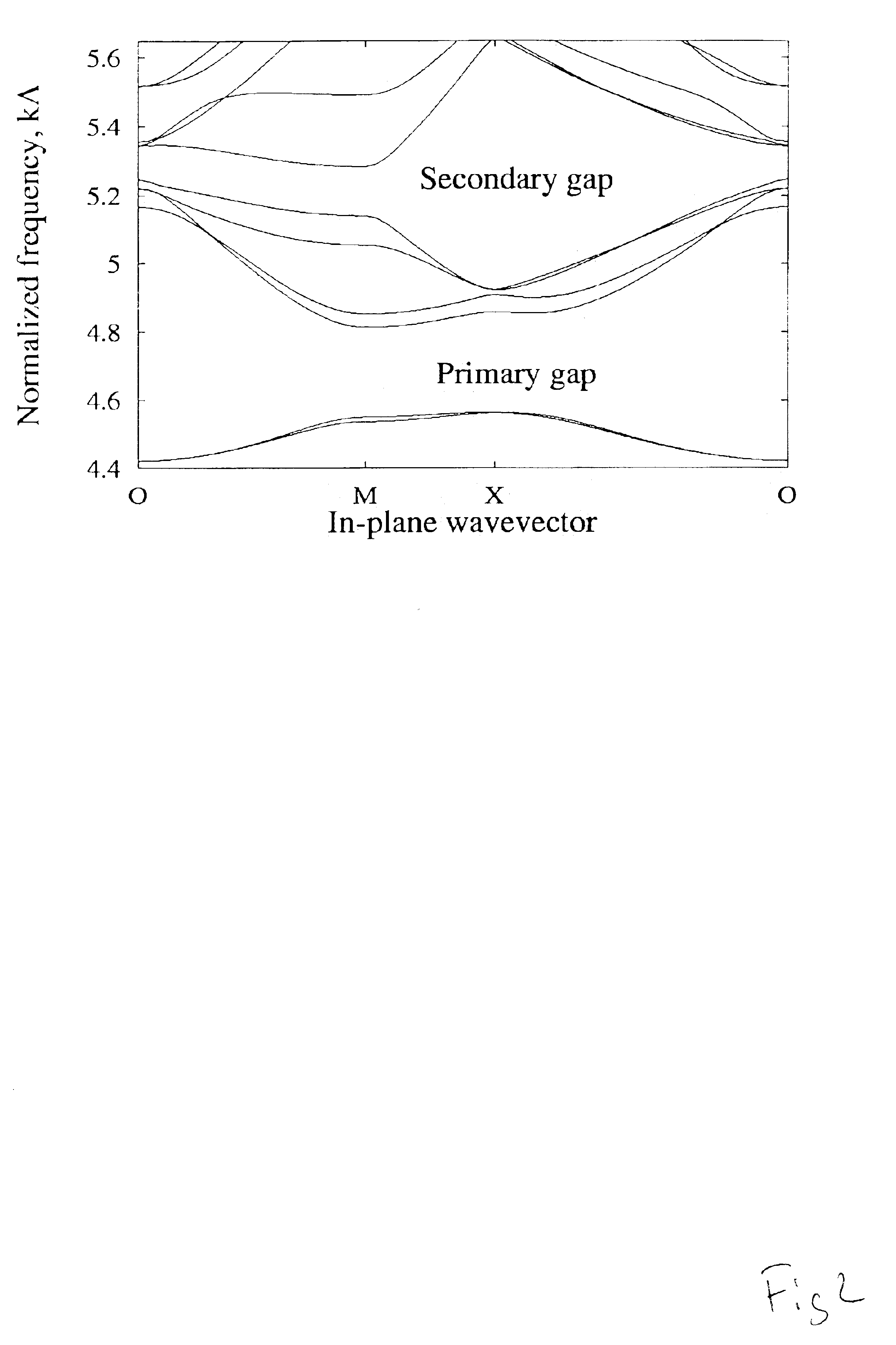Photonic band gap fiber
a fiber and band gap technology, applied in semiconductor lasers, instruments, manufacturing tools, etc., can solve the problems of insufficient pbg of the structure described by birks et al., the dimensions of the features forming the triangular periodic structure must be very large, and the core of the fibre cannot be formed. to achieve the effect of increasing the refractive index of the core region
- Summary
- Abstract
- Description
- Claims
- Application Information
AI Technical Summary
Benefits of technology
Problems solved by technology
Method used
Image
Examples
Embodiment Construction
Many different realisations of periodic cladding structures exist for low-index-core PBG waveguides, because they ran consist of a void, hole, or any suitable (additional or missing) material(s) disposed periodically in a (first material) matrix. By low-index-core PBG waveguide is meant any structure capable of the guiding electromagnetic fields according to the present invention, such as optical fibres, optical fibre amplifiers, fibre lasers and optical fibre based sensors. Another group of PBG waveguides comprises planar waveguide structures, such as sensors, splitters, couplers, multiplexers, amplifiers and lasers.
An example of such a periodic micro structured cladding shown in FIG. 16, where additional voids (20) have been centred on a straight line between the original voids (21) forming the 2-dimensional hexagonal (Honeycomb) structure. The function of the additional voids is to modify the penetration of the electromagnetic field between the different unit cells (low-refractiv...
PUM
| Property | Measurement | Unit |
|---|---|---|
| diameter | aaaaa | aaaaa |
| refractive index | aaaaa | aaaaa |
| area | aaaaa | aaaaa |
Abstract
Description
Claims
Application Information
 Login to View More
Login to View More - R&D
- Intellectual Property
- Life Sciences
- Materials
- Tech Scout
- Unparalleled Data Quality
- Higher Quality Content
- 60% Fewer Hallucinations
Browse by: Latest US Patents, China's latest patents, Technical Efficacy Thesaurus, Application Domain, Technology Topic, Popular Technical Reports.
© 2025 PatSnap. All rights reserved.Legal|Privacy policy|Modern Slavery Act Transparency Statement|Sitemap|About US| Contact US: help@patsnap.com



